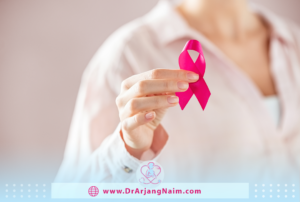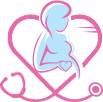While both men and women suffer from various ailments, some health issues affect women differently and more.
Women’s health issues are complex and diverse and affect physical, emotional, and mental health. From reproductive health issues like infertility and abnormal bleeding to chronic health problems like cancer and heart disease, women of all ages face a variety of health concerns that require specialized care.
Common women’s health issues to know about
Women’s health encompasses a wide range of mental, physical, and emotional well-being aspects throughout a woman’s lifespan. From reproductive health issues like contraception and infertility to chronic conditions like heart disease and osteoporosis, understanding these concerns is crucial for preventive care and overall quality of life. Factors such as age, race, and socioeconomic status can significantly impact women’s health outcomes, highlighting the importance of addressing disparities in access to healthcare and treatment. By promoting awareness and education, we can empower women to take control of their health and make informed decisions.

Heart disease
Heart disease is often thought of as a primarily male health problem, but it is the leading cause of death in women.
Women often experience various symptoms of a heart attack, such as fatigue, shortness of breath, and jaw or neck pain. These unusual symptoms can delay diagnosis and treatment and increase the risk of complications. In addition, factors unique to women, such as pregnancy complications and menopause, can increase the risk of heart disease. While menopause does not cause heart disease, some risk factors are more common after menopause, such as high blood pressure, higher cholesterol, and decreased estrogen.
It is important to raise awareness about heart disease in women, emphasizing preventive measures, early detection, and appropriate treatment. By understanding the specific risks and symptoms, women can take preventative measures to protect their heart health.
Stroke
Stroke is a major public health concern, and while it affects men more often, it is just as devastating to women. Stroke is the third leading cause of death in women. There are two types of strokes: hemorrhagic, or bleeding in the brain, and ischemic, or blockage of a blood vessel that disrupts blood flow. Although symptoms may vary depending on the underlying cause, typical symptoms of a stroke include slurred speech and numbness in the arms and legs.
There is also a relationship between pregnancy and stroke. Preeclampsia, a condition characterized by high blood pressure during pregnancy, can increase the risk of stroke. Neurological events in which blood clotting disorders are more likely to occur due to excessive clotting or excessive blood clotting can also happen during pregnancy. These blood clots can restrict blood flow to the brain.
Understanding the specific risk factors, symptoms, and stroke prevention strategies in women is essential to empowering them to protect their health. By raising awareness and promoting early intervention, we can reduce the burden of stroke on women and improve their quality of life.
Diabetes
Diabetes is a major health concern for women that affects millions of people worldwide. While this disease is common with diabetes in men, there are special challenges and complications for women.
Hormonal fluctuations, pregnancy, and menopause can affect blood sugar control and make diabetes management more complicated for women. In addition, women with diabetes are at increased risk of certain complications such as heart disease, stroke, and kidney disease.
Gestational diabetes is a condition that can occur during pregnancy, where your glucose levels rise and other complications occur.
Diabetes can also cause problems during pregnancy, including miscarriage and congenital disabilities. Special testing and monitoring may be needed for pregnant women with diabetes, especially those who are insulin-dependent. To reduce your risk of developing type 2 diabetes, try to maintain a healthy weight, exercise, and quit smoking.

Breast cancer
Breast cancer is one of the most common cancers affecting women worldwide. While significant strides have been made in prevention, early diagnosis, and treatment, it remains a complex disease that has a profound impact on patients and their families.
Factors such as genetics, lifestyle, and environmental exposure contribute to the risk of breast cancer. Early detection through regular mammograms and self-exams is critical to improving outcomes. Treatment options vary depending on the stage of the cancer and include surgery, chemotherapy, radiation therapy, and hormone therapy.
In addition to physical health, breast cancer significantly affects women’s emotional and mental health. Support systems, counseling, and rehabilitation play a vital role in helping women cope with the challenges of treatment and survival.
Urinary tract infections
Urinary tract infections occur when germs enter the urethra and begin to multiply. They are especially common in women because their urethra is shorter than men’s, reducing the length of time bacteria have to reach the bladder. Symptoms of a urinary tract infection include frequent urination, pain or burning during urination, and cloudy urine. While a UTI can go away independently, a doctor can prescribe antibiotics if necessary. Prevention includes good hygiene, hydration, urinating after sex, and avoiding irritants.
HPV
There are more than 30 types of sexually transmitted infections (STIs). One of the most common viruses is the human papillomavirus, which can be prevented with the HPV vaccine.
HPV (human papillomavirus) is the most common sexually transmitted infection (STI) in the world. Most women will be infected with HPV at some point in their lives, often without knowing it because it usually causes no symptoms. While most HPV infections clear up on their own, certain types can lead to genital warts or cervical cancer. Regular pap smears and HPV tests are essential for early detection and prevention of cervical cancer. Vaccination against HPV is highly recommended to protect against HPV-related diseases.

Osteoporosis
It is a bone disease that weakens the bones and makes them prone to fractures. Women are at greater risk due to factors such as menopause, which lowers estrogen levels, which are critical for bone health. This complication often develops silently; its symptoms appear only after a bone fracture. Prevention is key, including a calcium-rich diet, regular weight-bearing exercise, and avoiding smoking and excessive alcohol consumption. Early detection through a bone density scan can help manage osteoporosis and reduce the risk of fractures.
Premenstrual syndrome (PMS)
PMS is perhaps the most common problem that women face year after year. Premenstrual syndrome affects 40% of women and usually occurs in the last two weeks of the menstrual cycle. There are many symptoms, including breast tenderness, acne, muscle cramps, stomach pain, bloating, headache, depression, anxiety, fatigue, and difficulty falling or staying asleep.
While PMS typically resolves with the onset of menstruation, for some women, the symptoms can be debilitating.
PMS is painful and psychologically distressing, but there are things you can do to combat its effects. Lifestyle changes like regular exercise, a balanced diet, and stress management often help reduce PMS symptoms. In severe cases, medical intervention may be necessary.

Prenatal health
Prenatal health encompasses the care of a woman and her developing baby during pregnancy. This critical period requires a holistic approach, including regular check-ups, balanced nutrition, appropriate exercise, adequate rest, and avoidance of harmful substances. By prioritizing prenatal care, women can optimize their health, reduce risks for complications, and foster a healthy environment for the growing fetus, ultimately leading to a positive birth experience.
Alzheimer’s disease
Alzheimer’s disease is a type of brain degeneration in which abnormal particles called plaques and neurofibrillary tangles form in the brain and destroy healthy brain cells.
Alzheimer’s disease disproportionately affects women. While the exact reasons for this are still under investigation, factors such as longer life expectancy and hormonal influences play a role. Symptoms often include memory loss, language difficulty, and daily task challenges. Early diagnosis is very important to manage the disease and improve the quality of life.
The bottom line
Although men and women share some health risks, women are more at risk of certain diseases and injuries. Men and women are not the same, especially when it comes to their health risks. The first step to staying healthy is to know What you are facing and then take necessary precautions to reduce the risk. The good news is that many of the major threats to women’s health, which may vary by age and background, are preventable. Find out what you need to be aware of today to maximize your health.
Additional questions
- What causes cardiovascular disease?
- High blood pressure
- High cholesterol
- Use of tobacco
- Type 2 diabetes
- Family history of heart disease
- Lack of physical activity
- Being overweight or obese
- A diet rich in sodium, sugar, and fat
- How does diabetes affect life?
Over time, high blood glucose levels can damage organs. Possible long-term effects include damage to large and small blood vessels, which can lead to heart attacks, strokes, and kidney, eye, leg, and nerve problems.
- What causes breast cancer?
Women who have inherited changes in certain genes, such as BRCA1 and BRCA2, are at increased risk for breast and ovarian cancer. Fertility history Starting periods before the age of 12 and starting menopause after the age of 55 expose women to hormones for a longer period and increase their risk of developing breast cancer.
- What is the leading cause of osteoporosis?
Osteoporosis is primarily caused by a decline in bone density, often accelerated by factors such as hormonal changes, particularly the decrease in estrogen after menopause, inadequate calcium intake, lack of physical activity, smoking, excessive alcohol consumption, and certain medications. These factors collectively contribute to weakened bones and an increased risk of fractures.
- Who is at risk for Alzheimer’s?
Age is the biggest known risk factor for Alzheimer’s. Most people with Alzheimer’s develop the disease at age 65 or older, with less than 10% of cases occurring before that. As the age of people increases from 65 years, the risk of developing Alzheimer’s in them increases.
References
https://www.nm.org/healthbeat/healthy-tips/9-health-issues-every-woman-should-understand
https://www.obgynnebraska.com/blog/10-common-womens-health-issues-to-know-about
https://norehealth.com/top-10-womens-health-issues/
https://bloom.insure/10-most-common-womens-health-problems/
https://www.adventhealth.com/blog/12-medical-conditions-impact-women-more-men




